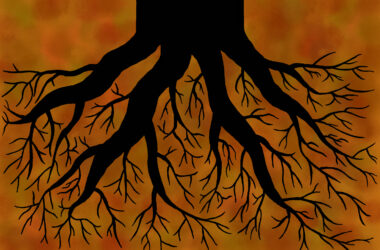A team of scientists from McGill, the National Institute of Scientific Research (IRNS), and the University of Ottawa have identified anger as being an intuitive, near-instantaneous reaction to crime in a recent study published in Psychology, Crime & Law. Their research shows that emotion, alongside factual evidence, can play a significant role in determining punishments for criminalized individuals.
Led by Carolyn Côté-Lussier, professor of urban studies at the INRS and assistant professor in the University of Ottawa’s criminology department, the experiment asked participants to make snap decisions about the degree of punishment 52 males should receive based on their photo. Participants were told that the men had previously been convicted of a crime, but their actual crimes were not listed.
By measuring both the participants’ electrical impulses that control facial expressions and their punitive decisions, Côté-Lussier’s team concluded that anger could manifest itself physiologically within only 500 milliseconds. Participants had decided on a punishment for a criminalized person after only 1.3 seconds, on average.
The researchers used facial electromyography (fEMG), a technology that records minute movements in facial muscles down to the millisecond, to quantify the physiological manifestation of emotion. The movements of corrugator muscles, those directly responsible for frowning, were specifically recorded to isolate instances of anger.
“We respond to other people’s facial expressions and emotions, and we also have our own facial expressions that express our emotions,” Côté-Lussier said in an interview with The McGill Tribune. “I’m very interested in these micro expressions, in how we feel intuitively. You might not be aware of where an emotion is coming from, but it [manifests] itself on your face.”
The team observed that participants felt varying levels of anger toward the individuals they were shown, and that there was a correlation between how “warm”—or friendly—the individual was perceived to be and the degree of punishment the participants said they should receive.
“When I was creating the groups of pictures, I was focussed on how they differed on the dimension of warmth,” Côté-Lussier said. “Because this […] is the thing we pay attention to the most [in this experiment] and will really orient our emotions to a particular social emotional group.”
Côté-Lussier noted that this intuitive manifestation often stems from biases founded upon demographic characteristics like race, age, perceived social status, or attractiveness.
“These kinds of biases […] are infusing our reasoning, they are tinting the way that […] we see people, and we can work actively to try and dismantle that. But when we look at the data, we tend to see the same kind of biases being manifested,” Côté-Lussier said. “So there is a link here between the intuition and the outcome that we end up seeing.”
Côté-Lussier says that other characteristics that provoke such biases pose possible areas of future study, now that the link between the intuitive nature of anger and punitiveness has been quantified.
“For instance, I haven’t considered the race dimension in the analyses themselves, partly because I made an effort to control for that by having the same kind of composition across the two groups,” Côté-Lussier said. “But that doesn’t mean that that stops us from looking at those dimensions [in the] future.”
And according to Côté-Lussier, it is these internalized biases and tendencies to make snap judgments that proliferate and fester in our criminal justice system, even if we make efforts to check them at the door of the courthouse.
While Côté-Lussier recognizes that this research does not directly emulate what occurs in the courtroom, specifically because judges and jury members are expected to make decisions based on evidence, not just a photo, she reminds us that our innate tendencies can lead us to make emotionally-guided judgements.
“I think it would be incorrect to expect that a judge or a jury member could do away with the emotional intuitive reactions,” Côté-Lussier said. “For me, the important thing is less about how I hope people will pay attention to [this research] in the criminal justice system, and more about how I want it to tackle social, structural inequities. If we reduce those inequalities, we’ll see less crime and less anger about crime.”









